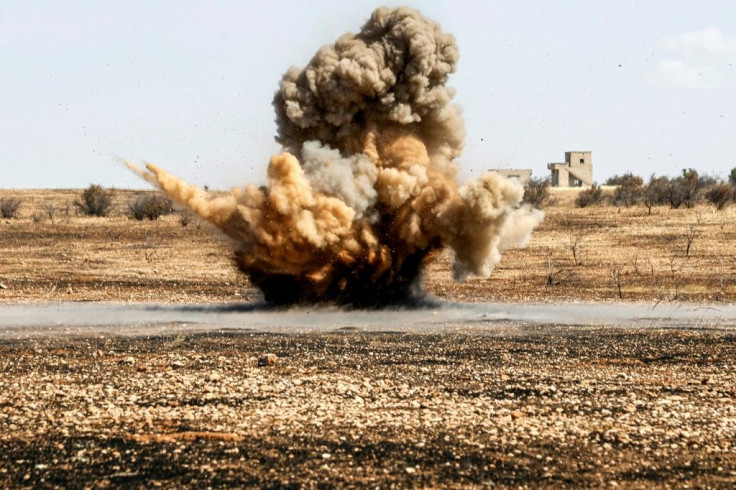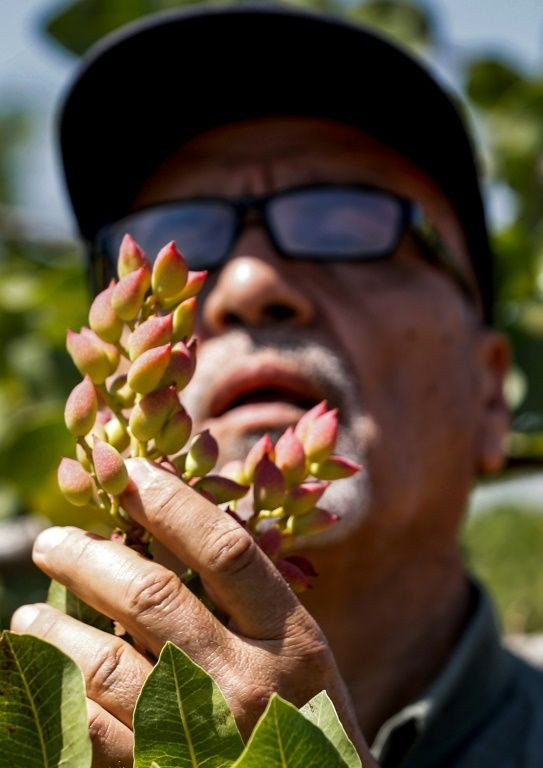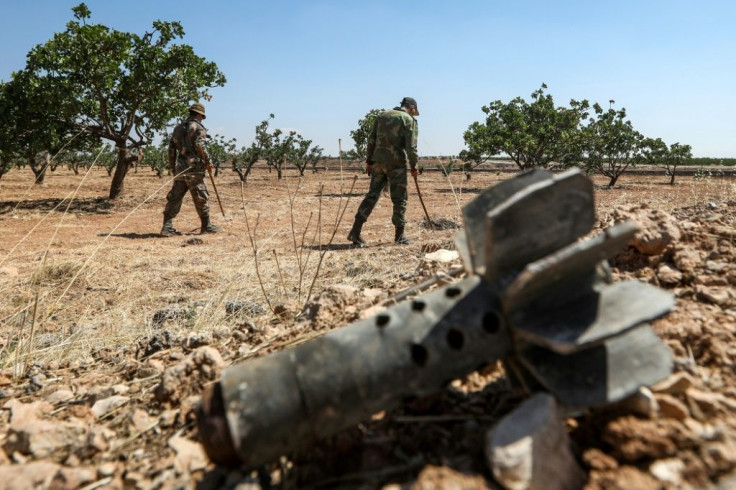Syria Pistachio Farmers Return To Orchards After Years Of War

Pruning scissors in hand, Syrian pistachio farmer Fadi al-Mahmoud inspected his orchard, hoping for his first harvest after years of war, as nearby army de-miners swept the ground for buried explosives.
"I will be fine as long as my orchard is fine," said the 40-year-old, who returned to his village of Maan in the north of battle-scarred Hama province only months ago, after years of displacement.
The region, long a centre of Syria's famed pistachio production, was controlled for years by jihadists and rebels, but it fell to President Bashar al-Assad's government forces early this year.
After the violence subsided, many farmers like Mahmoud returned, hoping this season would mark the revival of what was once a leading industry, its produce beloved across the Middle East.
"The pistachio tree is the lung that allows the villages of the Hama countryside to breathe," Mahmoud told AFP during a break from pruning the trees with shears and a small saw.
Parting the green leaves, he examined the pistachios, looking for the purple hue on their greenish cream-coloured outer casing that indicates they are ready to be picked.

Syria was once a top exporter of the green nut that is widely used in sweets and sprinkled on ice cream across the Middle East.
The country produced up to 80,000 tonnes a year before the start of the conflict in 2011, mostly for export to Saudi Arabia, Lebanon, Jordan and Europe.
In 2013, according to the United Nations Food and Agriculture Organization, Syria was still the world's fourth largest pistachio producer after Iran, the United States and Turkey.

But years of bitter fighting blocked access to Syria's best pistachio regions in Hama, Aleppo and Idlib provinces, leading production to plunge by more than half during the war, according to the agriculture ministry.
Of more than 70,000 hectares (170,000 acres) of farm land alloted for pistachio growing in the northwest, a quarter has been damaged by war, said Hassan Ibrahim, director of the ministry's pistachio department.

Mahmoud said that on his farm, "some tree branches had withered, and there were trenches and landmines scattered all around".
"I hope I can start to make up for the losses during the war," he said.
He explained that pistachio orchards "require a lot of care".
"They must be ploughed four times a year and sprayed with pesticides twice annually or more."
Although the battles have died down, danger still lurks in the soil in the form of anti-personnel mines and other unexploded ordnance left behind by rebels and jihadists.
The authorities "have sent teams to sweep the area," Ibrahim told AFP.
Outside the village, where the skeleton of a charred vehicle sits in an arid field, Syrian army de-miners swept the rust-brown earth with metal detectors for remnants of war.
A loud blast echoed across the land as they detonated a landmine.
Another local pistachio farmer, Ibrahim Ibrahim, recalled harvests before the war.
"We used to pluck tonnes from our trees every year and distribute them in local markets or export them," said the 55-year-old.
The nuts "make up our main source of income".
"This is the first year that farmers re-enter their lands without fear," he said.
"I hope... this year we will see production rise to pre-war levels."
© Copyright AFP {{Year}}. All rights reserved.





















